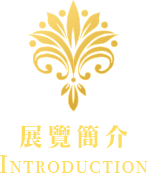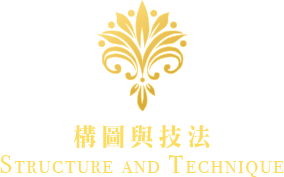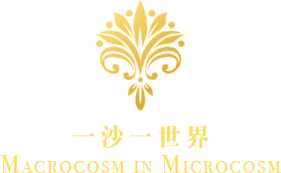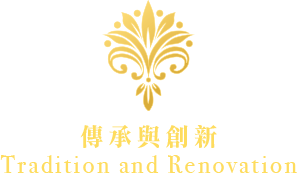
相較其他宗教,絕大多數的觀眾對於東正教的藝術表現與宗教歷史,總是感到相當的疏遠陌生。有鑑於此,為了增進多元文化與國際視野,世界宗教博物館首度與臺灣基督東正教會聯手合作,特別邀請希臘雅典大學George Kordis教授來台展出,並在其指導之下製作精采絕倫且難得一見的蛋彩聖像畫特展。
展覽一共分為四個子題,分別是「療癒之美,天上來」、「構圖與技法」、「一沙一世界」、「傳承與創新」,展場中,除了畫作之外並以影像作為輔助,其中中央舞台圓弧區的作品,為Kordis教授於展示期間親自繪製。聖像畫不只是畫師的作品,更是東正教徒訴說心事的對象。為了保留觀畫者與聖像畫的心靈交流,我們將解說文字隱藏於各展區的資訊盒中,以不打擾您與畫中聖徒的對話。
我們期許藉由這種嚴謹的文化傳承態度,能為國內文化資產保存領域累積不同的藝術視野、文化知識、以及正面思考的能量,也期待透過細膩的展示效果,豐富國人的視野以及心靈。歡迎各位一同領略這具有兩千年歷史、且深富哲學意涵及精湛技巧的東正教蛋彩聖像畫。
Compared to other religions, the vast majority of people find the religious history and artistic expression of Orthodox rather distant and strange. For this reason, the Museum of World Religions, in joint cooperation with Taiwan's Orthodox Church for the first time, is holding an exhibition to promote multiculturalism and international perspective. George Kordis from the National and Kapodistrian University of Athens in Greece has been invited and has provided guidance on exhibiting the exciting and rare tempera icon painting.
The exhibition is divided into four sub-themes, namely “The Heavenly Beauty of Healing,” “Composition and Techniques,” “A world in a Grain of Sand,” and “Inheritance and Innovation.” Visitors are led from the right to the left. In addition to the paintings, images are also displayed, wherein the works in the central arc stage are the ones personally drawn by Professor Kordis during the exhibition.
We hope that by treating cultural heritage seriously as such, different artistic visions, cultural knowledge and positive thinking may be injected into the world of cultural asset preservation in Taiwan. It is also anticipated that the exquisite display may enrich people's vision and mind. We welcome you all to have a taste of the exquisite Orthodox tempera icon paintings that have two thousand years of history and are rich in philosophical implications.


東正教會的正式名字是「獨一無二」、「至聖至公」、以及「宗徒所傳承的教會」。「Ortho」指的是正確的方法,「doxy」意思是榮耀神,因此「東正教Orthodox」就是以正確方式榮耀神的意思。這個名字源於第三世紀,以區分正信的基督徒,和非正信的基督徒。
教會就是耶穌基督的身體,在世上傳揚神的愛。它促使世界各地的文化臻於成熟,影響哲學、美術、和建築。新約聖經譯本源自希臘文,更是各國文學的靈感泉源。
東正教會教導我們去愛每個人、為每個人祈禱、也為一切受造萬物祈禱。教會並不譴責任何人,而是藉由對復活的信仰,以及對耶穌基督第二次再臨的盼望,除去我們對死亡的恐懼。
The One, Holy, Catholic and Apostolic Church (This is the official name). The Orthodox Church is the original church. The word of “ortho” equals the correct way, the word “doxy” equals “glorify God”, and so“Orthodox” means to glorify God with the right way. The name was from the very beginning, from the third century, to distinguish Christians who believe God in the right way from who believe in the wrong way.
The church is the body of Jesus Christ, to spread the love of God in the world. The church enhances the culture of the world by arts, architectures and new ways of thinking. The translation of the New Testament of the bible from the original Greek language was the beginning of the literature in many countries.
The Orthodox Church teaches to love everybody, prays for everybody, and prays for all creatures. Church doesn’t condemn anybody. Church takes out the fear of the death by the faith to resurrection and the second coming of Jesus Christ.

聖像畫並非畫家想像的產物,也非表達畫家的想法或感受。事實上聖像就是聖徒的容貌,聖像畫家必須依循教會傳統、精心闡釋,並以圖像表達畫中人物與所有活在基督裡的信眾之間的關係。
歷經數世紀,拜占庭風格被視為是神聖的繪畫形式。畫家透過此形式詮釋神聖主題,揭示基督教救世的各種神學面向。這種繪畫形式讓畫中聖徒與觀畫者彷彿存在於同一個時空當中。
聖像傳達幾項訊息:
Icons are not an imaginary product of painters and do not primarily express their own ideas or feelings. Icons are primarily the face of the saints. Iconographers elaborate these according to the ecclesiastical tradition and they attempt to render in visual terms the relationship between the person depicted and the living members of the Church.
The painting mode of the iconography which is consecrated through centuries is called today Byzantine painting. Through this the painters interpret the sacred themes revealing their theological dimensions for the salvation of humankind. And of course this painting mode allows the painters to bring forth what is depicted on the walls of the churches to our present.
The icons reveal:


蛋彩是將蛋黃混合礦物顏料和水,作出液態且易調配的顏料,有時也會加入少許的醋或白酒。這些物質有助於保存蛋彩,並使顏料更易於使用。
蛋彩畫使用的是半透明上色法。畫家一般先以較深的顏色打底,這就是所謂的第一層顏料「Proplasmos」,接著在這層顏料上,加上其他較淺以及色調較冷的色彩,稱為「Lamata」或「Sarcomata」。畫家依據上述流程創作,色彩會被視為光,從畫面中散發出來,讓觀畫者感覺這道光芒是從聖像內部散發出來。聖像畫中的聖徒散發著內在靈性光輝,栩栩如生,聖潔高貴。
The Egg tempera technique is made by mixing the yolk of the egg with mineral pigments adding some water to make the paint more liquid and manageable. Apart for these materials a small quantity of vinegar or white wine is added to the mixture. These materials preserve the egg tempera and make it more manageable.
The egg tempera technique is semi-transparent technique. The painters always start from a dark enough basic paint which is called Proplasmos and on that they apply many other lighter and colder paints, which are called Lamata or Sarcomata).

在拜占庭繪畫當中,線條與色彩是和諧共存的、甚至是合而為一的。拜占庭繪畫形式的本質就是顏色。線條只不過是色彩存在的一種模式。如果現在有兩個造型都以朱紅色描繪,則這兩個造型擁有相同的色彩本質,而他們透過線條呈現不一樣的存在模式。
線條脫離顏色,便無法被辨識。畫家必須覺察繪畫時正在界定色彩的單元。上色的基本原則是將深色與淺色、暖色與冷色交疊排列。這種色彩處理方式讓觀看者能夠清楚辨識聖像的不同區塊,體驗畫面栩栩如生的感官刺激,並與畫中人物建立親密而穩定的關係。
In Byzantine painting, line is harmoniously, or rather hypostatically, conjoined with color. The essence of Byzantine pictorial forms is color. Line is nothing other than the mode of existence for the color. If there are two shapes-figures of the same red color, they easily can be concluded that these shapes are of the essence qua color. That is to say they have different modes of existence that are defined by line.

在單人聖像畫中,人物的姿態最好是身體向左,但視線朝右,讓兩者之間的力量相互抵銷,形成對立平衡的關係。這種姿勢會讓觀畫者覺得聖徒正在注視自己,使畫中人與畫外人之間自然產生一種親密感。
全身人物像的韻律感中,S形姿勢是讓身體與頭部連成一個正向或逆向的S形(視身體動作方向而定),讓人感覺畫中身體雖靜猶動。這樣一來可同時達到兩個效果:服飾呈現美妙的流動感與節奏;並因而產生一種向觀看者靠近的動感。
In icons that depict only one saint, the figure should move towards the left, so that the gaze, which exerts a counterbalancing force to that of the body, moves to the right. This is quite the best stance, since in this way the viewer has the impression that the gaze of the saint is directed at him, while at the same time a sense of intimacy is created.
In the full-length figure, the head are joined in the form of an open or inverted S (depending on how the body moves) in such a way as to give the impression that the body, while remaining immobile, is in dynamic movement. Here two things are achieved simultaneously: a wondrous sense of flow and rhythm in the internal organization of the garments; and, and as a result of this, the prerequisites for motion towards the viewer, which is the referential function of the icon.

在拜占庭藝術傳統中,山水與建築元素扮演的角色,遠不如人物重要。13至14世紀,這類元素的重要性大幅增加,但在拜占庭繪畫中,這些元素從未以寫實的方式出現。
山水與建築只是用來表現構圖的韻律或節奏,往往環繞中央的主題,烘托人物。這些線條採用X形交叉構圖,畫面的整體動勢在觀看者面前營造出一種莊嚴有序的感受。這些元素所使用的色彩也遵循相同的藝術原則,刻意避免模仿感知的現實世界。
In Byzantine artistic tradition Landscape and architectural elements are not so important as the human figure which the predominant element.The landscape and the buildings serve the rhythmical settlement of the composition. Usually they are put in a symmetrical way around the center of the composition and they flank the main figure. The dynamic of the lines are following X crossed axes and they create the rhythm which demanded in order for the entire composition to be projected towards the beholder.

東正教堂是一座慶祝聖餐聖事之建築,因此在希臘傳統中稱之為「教會」(Church):人與神結合的奧秘在此實現。為了表達各種神學理念,基督教團體曾多次改變東正教堂的造型,最後選定十字架平面加上圓頂,體現基督教會的真理與信仰。這種建築的韻律以兩種造型為基礎:方底與圓頂。矩形象徵世間大地,圓頂則代表天堂。因此,此建築也體現了微型宇宙。
同時,這種結合兩個不同部分的教堂建築,也代表耶穌基督。因為人性(方底的大地)和神性(圓頂的天堂) ,在基督的位格中,以不改變、不混淆、不分離的方式合而為一。教堂平面呈現十字形,以四根樑柱撐起上方圓頂,這表明救恩進入世界,是始於基督,也是立基於基督在十字架上自願地犧牲。十字架當然也在提醒信徒,要得到拯救,必先犧牲,拋棄自我主義。
這種教堂建築風格的詮釋方式,影響了教會的聖像學,在教堂內部各區彰顯不同主題。因此,上方圓頂(天堂)描繪的是基督—懷抱萬有者(Christ Pantokrator),身旁圍繞著眾天使。祂既是世界的造物主,也是教會的頭。下一個景區描繪的是預告基督道成肉身奧蹟的先知們。在圓頂底部則是四位福音書作者,因為這四位聖徒記載了耶穌在世的事蹟。在教堂中殿(矩形)的較高處,描繪的是基督生平事蹟,下方區塊則站著諸位聖徒,為現世基督徒的靈魂祝禱。
The Orthodox temple is a building where the sacrament of Eucharist is celebrated. For that reason this building in the Greek tradition is called Church since the mystery of the union of Man and God in realized in this. The form of this building passed though different shapes in attempt of Christian community to express several theological ideas. Finally the shape of the cross domed shape was selected to visualize the faith and the Truth of Christian Church. This architectural rhythm is shaped by two different shapes. A rectangular on the basis and a dome on the top. The rectangular shape symbolizes the earth and the dome symbolizes the heaven. This way the building of the church is becoming an image of the universe in a small scale.
At the same time this building with the two different compartments symbolizes Jesus Christ since in His person the Human (earth-rectangular shape) and the heaven) Dome ) are united in an unchanged and an unconfused and inseparable mode. A cross is shaped on the floor of the building with the four columns which support the dome. This way is indicated that the salvation which is brought to the world with Christ started and based on His willingly Sacrifice on the Cross . The Cross of course suggests to Christians that the way to their salvation passes through sacrifice and the death of their egoism.
This interpretation of the building of the Church affected the iconography of the Church and played crucial role in establishing the themes in the different sections of the Church. Thus on the top of the Dome (Heaven) the Christ pantokrator surrounded by Angels and heavenly powers, is depicted since He is the Creator of the World and He is also the head of the Church. After that in the next zone Prophets are depicted who predicted about His Incarnation and on the base of the Dome the Four Evangelists are always painted since these saints wrote down the history of Christ on earth. In the nave (rectangular shape) on the higher zone themes for Christ life are depicted and on the lower zone standing saints are praying for the souls of the living Christians.

拜占庭聖像畫歷史悠久,不同派系風格在此融匯,所有這些不同的面向,都形塑了所謂的聖像畫傳統。在聖像畫之中的「傳統」,是一種思考方式。基本上,它是一種處理繪畫元素(線條、色彩、構圖、韻律)的方式,以達成特定目標。凡是符合這目標的繪畫,即使其外觀不似拜占庭或傳統風格,都可算是聖像傳統的一份子。而許多元素看似傳統,卻因破壞了聖像畫的基本功能,所以並非傳統。
傳統並未終止,儘管許多現代人認為傳統已死,但傳統其實可以日漸豐富,不斷成長。當然,豐富傳統不是根據個人標準,任意加入新元素。豐富傳統的意思是:不論加入何種新的元素,都必須與原有元素和諧相容,自然的傳承原本存在的方式。這樣的傳統才能同時保持穩定又繼續前進。因為基本原則和理念保持不變,使傳統亙古不變;因為傳統精神找到新的表達方式,與時俱進,使傳統日新又新。
Christian and more specifically Byzantine iconography has a long history consistent from different stylistic expressions. All these different aspects of iconography shape what is called tradition of Iconography. Tradition in iconography is a way of thinking. It is basically a way of handling the painting elements ( line, colors, composition, rhythm) in order for a specific goal to be achieved.
Tradition is not finished and despite many contemporary people’s opinion can be increased and grow up. Of course increasing tradition doesn’t mean the arbitrary introduction of elements under personal criteria. Increasing tradition means enriching tradition. That means that whatever new is introduced must be compatible to the old elements and that the new proposal will be a natural continuation of the what existed till then. This way Tradition is always stable and moving at the same time. It’s always the same since the basic principles an ideal remain the same and is always new since this spirit finds new ways of expression and is becoming always contemporary.

歡迎來到東正教聖畫像的世界—通往天堂的走廊。畫中人物多是聖徒,有些是殉道者,有些是修道者。殉道(Martyr)是希臘字,意思是「見證」。有史以來,許多政權逼迫基督徒放棄信仰,否則折磨致死。但基督徒仍堅持愛著耶穌基督,見證耶穌就是他們的生命,寧可捨命也不願捨棄耶穌。因此,人們將他們的「見證」稱為殉道。重點不在於追究迫害者,而是教導我們對神的愛應有多麽強烈,又該如何持守信實和堅定。
Welcome to the world of orthodox icons, the hallway of Paradise. The people who are depicted are saints, some of them are martyrs, and others monks or nouns.Martyr is a Greek word, means witness. From the past, even nowadays, different regimes forced Christians to refuse their faith or they will be tortured and will be put to terrible death. But Christians stay firm in their love to Jesus Christ, so they gave their witness that Jesus is their life, and preferred to die than to live but refusing him. For this reason, for the “witness” they gave, are called martyrs. Important is not who were the prosecutors, or what religion they had. The church encourage us to study their lives to give us a lesson how strongly we should love god, and how to be honest and firm.

心禱(The Prayer of the Heart),又稱耶穌禱文,是東正教祈禱的核心。我們在心中重複念誦禱詞:「主耶穌基督,憐憫我。」單單專注於這句出於聖經的簡單禱文,忽略其他思緒和幻想。神會使祈禱從心智逐漸進入我們最核心的存在:心,最終甚至「不住的禱告」(帖撒羅尼迦前書5:17)。當神的恩典更新我們的存在,神的聖名成為靈魂的呼吸,我們的內在將放射出神的光芒,強烈體會到耶穌與我們同在:「現在活著的不再是我,乃是基督在我裡面活著。」(加拉太書2:20)。這是心禱的最高境界—神化:深深地愛神、愛眾人、愛萬物,這「愛」是神的恩賜。「憐憫我」的「我」並非自己,而是全人類:「我們這許多人,在基督裡成為一身,互相聯絡作肢體」(羅馬書12:5)。
The prayer of the heart, or Jesus prayer is the core of the Orthodox prayer. We begin by repeating in our mind the simple prayer that is in the New Testament: “Lord Jesus Christ have mercy on me”. We concentrate on the words and we try to ignore any other thought or imagination.If God wants gradually the prayer will go from the mind to the center of the human existence, the heart. Grace of god comes to that person, and renews his existence. The name of Jesus now is the breathing of the soul, as the air the lands. In deepest case the prayer ceases because Jesus is so strongly inside this person. “…it is no longer I who live, but Christ lives in me”(Gal. 2:20). This is the condition of “deification”.
